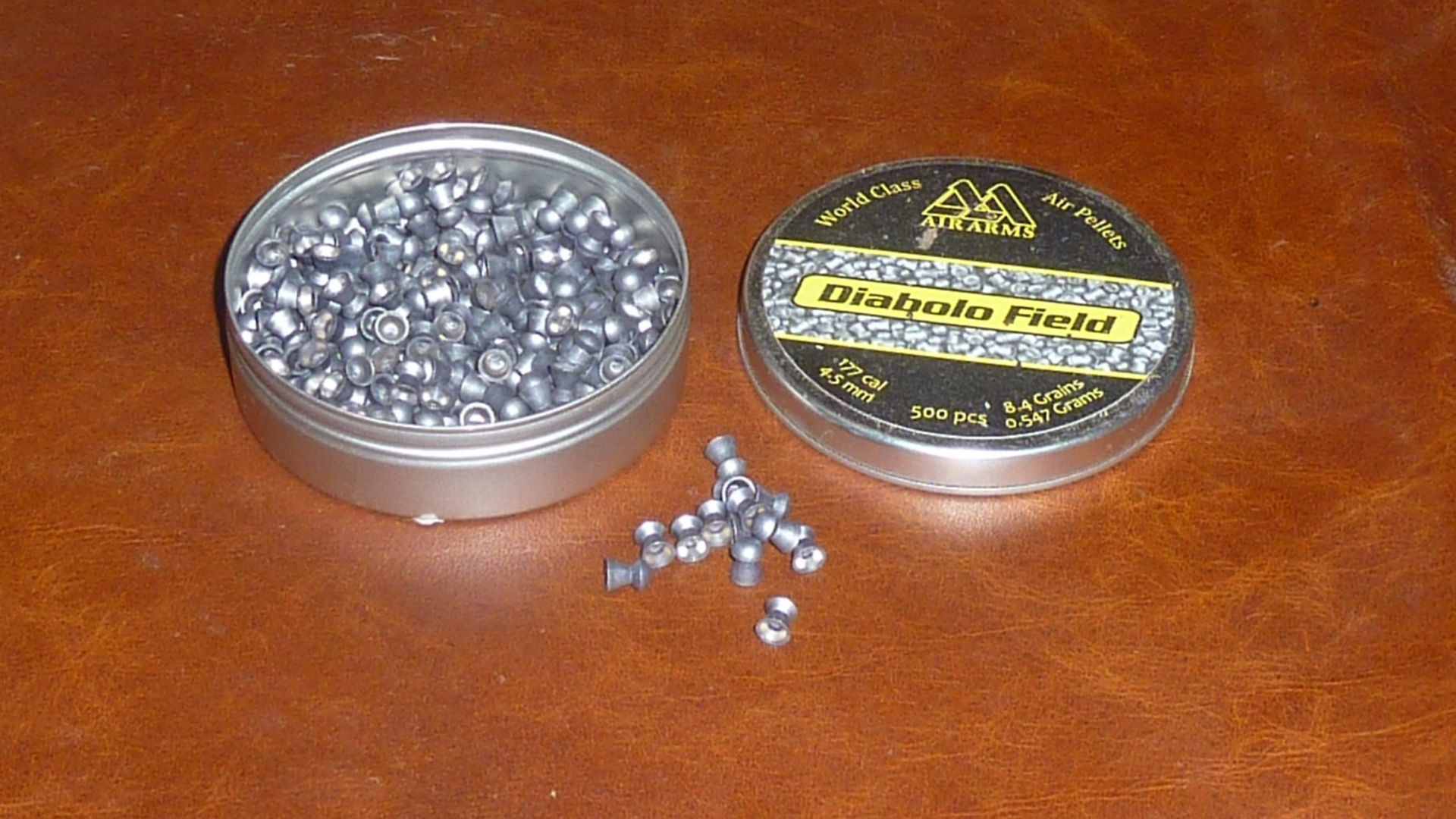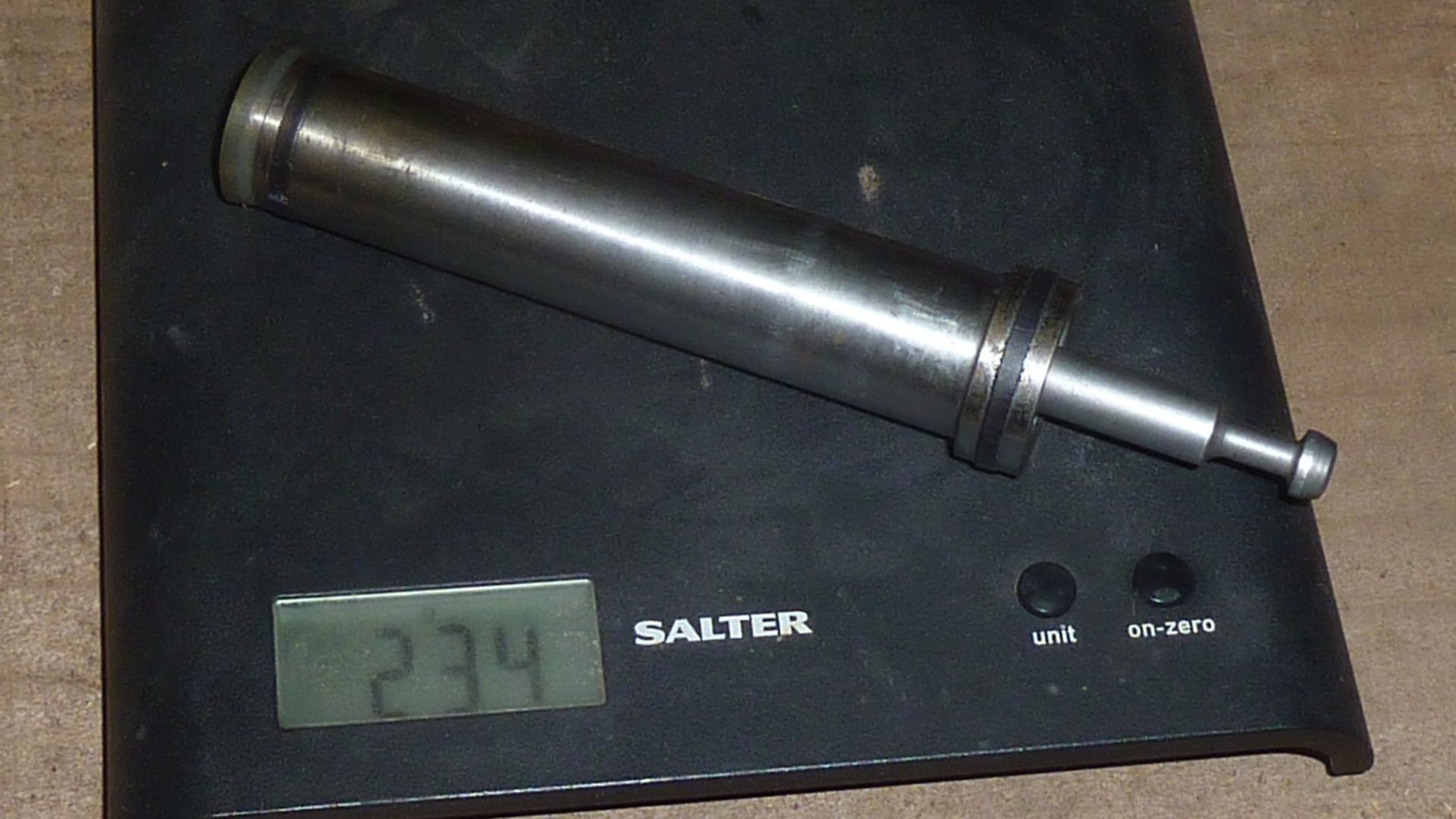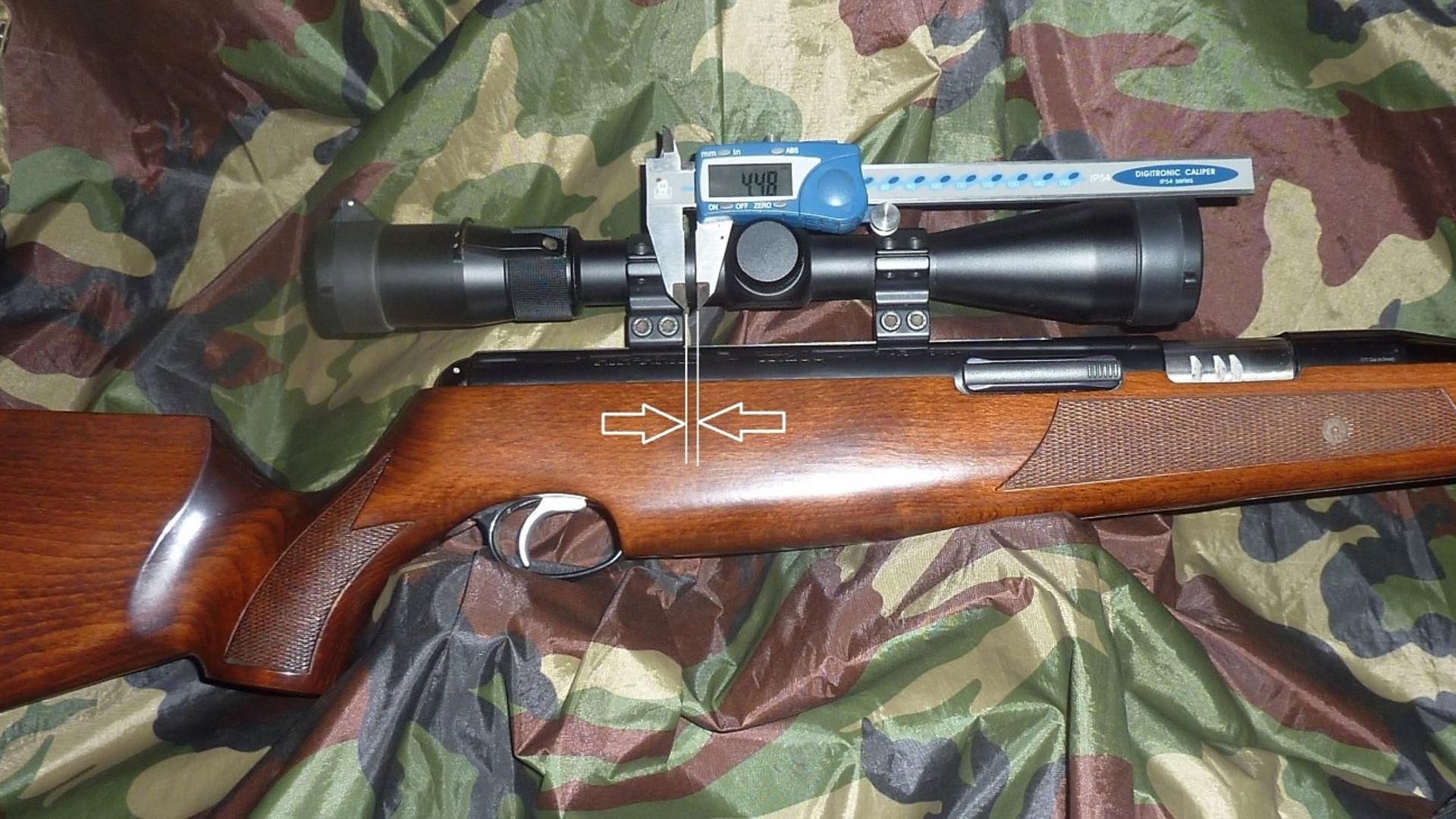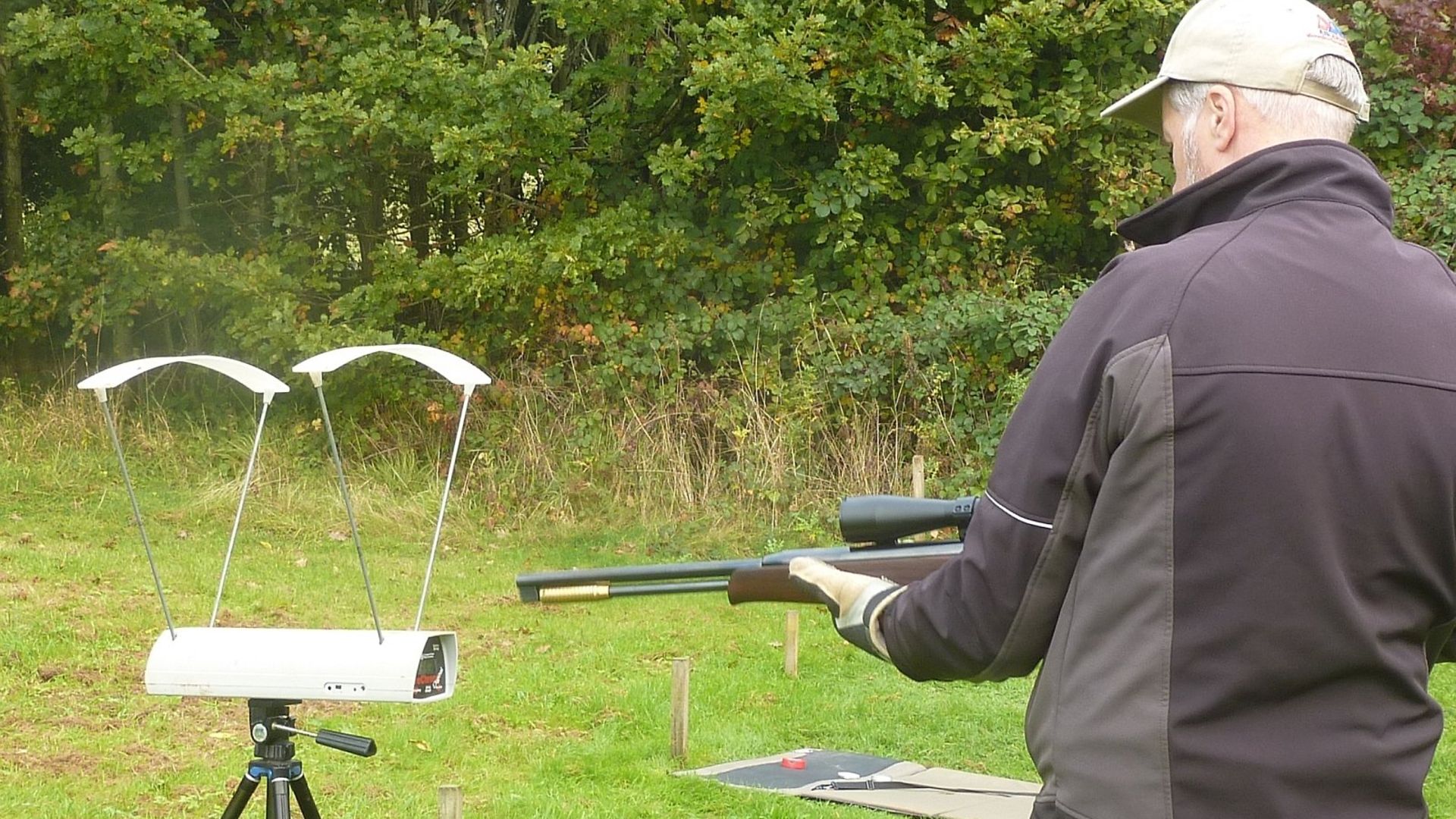What is the most important element of spring gun accuracy for air rifle tuners to tinker with? Jim Tyler narrows it down...
If you ask most airgun enthusiasts what the most important characteristic of an airgun is, they will answer that it is accuracy, and that’s a perfectly acceptable answer, although the ‘accuracy’ of a springer is something that can be difficult to nail down.
Accuracy is ultimately determined by the quality of the barrel and how well matched it is to the pellet, and by the shot-to-shot velocity consistency, but with the springer, the technique of the person shooting it is equally important, and it is the human element that makes defining the accuracy of a springer
so difficult.
 credit: Archant
credit: Archant
Two types of accuracy
I have written before on two types of accuracy, bench accuracy and field accuracy. A springer that groups superbly shot from the bench can be found wanting in its field accuracy (hunting, FT and HFT, for example), and that can be due entirely to the skill, or lack thereof, of the shooter.
When shooting from a bench, it is relatively easy to maintain a consistent hold, shot after shot, but in three-positional shooting, it is incredibly difficult to maintain a consistent hold, especially if the ground is uneven or sloping, and so springer tuners strive to make rifles less sensitive to changes in rifle hold that can move pellet point of impact, in the belief that it is the single most important tuning goal.
The glaringly obvious way to reduce a springer’s hold sensitivity is to reduce the distance by which the rifle recoils, so low recoil becomes another candidate for the most important characteristic, and recoil can be reduced in a variety of ways.
 credit: Archant
credit: Archant
Recoil displacement
The recoil displacement is a simple function of the weight of the piston (and part of the weight of the spring), the weight of the rest of the rifle, and the distance travelled by the piston during the compression stroke, and the recoil displacement (travel) can be reduced by reducing the weight of the piston, increasing the weight of the rifle, and shortening the available piston stroke. In competitive outdoor target shooting, it is common practice to apply all three recoil reducing methods at once.
People tend to describe the recoil of their springers in terms of their perception of the feel of the shot cycle, but it is very easy to calculate the ‘free’ recoil displacement based on the weights of the piston, spring and rifle, and the length of the compression stroke.
Before looking at the formula above, I should point out that the calculated figure for recoil would be the recoil were the rifle absolutely free to move, (hence the ‘free’ recoil) and, although the recoil with someone shooting the rifles will be lower than the calculated figures, the free recoil figures serve as an excellent comparator between rifles. In the absence of external restraint and friction, springers would recoil by the compression stroke in millimetres, multiplied by the weight of the piston plus a third the weight of the spring, and divided by the weight of the rest of the rifle/scope. Let’s put some figures to that, and I’ll use my 85mm stroke TX200 as an example.
The piston does not quite reach the cylinder end wall during the compression stroke, and it’s fair to assume that the compression stroke will be in the region of 84.5mm; the piston weighs 0.210 Kg, a third of the weight of the spring is 0.033, and the rest of the rifle/scope is 4.36 Kg, so the primary recoil will be 84.5 x 0.243 / 4.36, which works out at 4.46mm. Think about that figure for a moment, it is fractionally less than the diameter of a .177” pellet, it is a tiny distance.
You can use the simple formula to calculate the effect on free recoil of modifications such as altering the length of available piston stroke, the weight of the piston and spring, or the weight of the rifle, and decide whether the gain is going to be worth the effort, expense, and the risk of unforeseen side-effects.
 credit: Archant
credit: Archant
Increasing mass
For FT and HFT competitors, increasing the rifle’s mass is the obvious first step, because it can only change the recoil cycle for the better by reducing not only recoil travel, but surge and muzzle flip. Rigs weighing upwards of 6 kilos are not uncommon, and were I to increase the weight of my TX, perhaps with a hefty custom stock, to 6 kilos, the free recoil would reduce to 3.56mm.
I doubt many hunters would be thrilled at the prospect of lugging 6 kilos of rifle and scope around their shoot, so their options for reducing recoil are limited to reducing piston stroke or piston weight, either of which will reduce the recoil, but if you wish to maintain muzzle energy, either of which can necessitate a change in the nature of the recoil cycle in doing so, not necessarily for the better.
Think twice before reducing the piston weight because the air is primarily compressed by the piston momentum, a direct function of its mass and velocity, and if you reduce one (the mass), the other (velocity) will have to increase to compensate. If you increase piston velocity by increasing the preload of the existing spring, you could be rewarded with a tiny reduction in recoil travel, without drastically altering the nature of the recoil cycle. If, though, you have to increase piston velocity by fitting a stiffer mainspring, you will change the nature of the recoil cycle; the initial recoil acceleration will increase, and I would be surprised if the surge acceleration and travel did not increase.
 credit: Archant
credit: Archant
Real World
In the real world, the springer is supported, and to some extent, restrained by the user which, of course, further reduces the recoil travel, which is not necessarily the good news it may appear at first sight.
The extent to which the user reduces recoil travel depends on whether the rifle is merely supported, in which case, friction between the hands and rifle reduce recoil travel, or gripped to some extent, in which case some of the mass of the forearms is added to that of the rifle to reduce recoil and, of course, if the butt touches the shoulder, that also reduces recoil travel. In practice, most of us both support and grip the rifle to varying degrees, and the slightest change in support/restraint can vary the recoil displacement by a small amount, and what makes that a problem is not the change in recoil itself, but the fact that the rifle is pointing in a slightly different direction when the pellet exits the muzzle, which means that the pellet point of impact (POI) shifts – we miss.
We might reasonably suppose that reducing the ‘free’ recoil travel will reduce the magnitude of variations in pellet POI due to slight changes in support/restraint, but experience suggests it does not necessarily follow, and probably depends on how the free recoil was reduced. In the November issue, I wrote at some length on the shot development time and, although getting the pellet out of the muzzle as quickly as possible was undeniably a worthy aim, how reducing the SDT could come at a price, depending on how it was reduced. If the STD is reduced by lightening the piston, shortening the available piston stroke, or fitting a stiffer mainspring, then the free recoil will reduce as a by-product, and vice-versa.
 credit: Archant
credit: Archant
Available air
Reductions in STD, and reductions in recoil travel other than by increasing rifle mass, often involve reducing the amount (the mass) of air available for the shot and, if you go too far, there are implications. It is important to recognise that there is a minimum air mass requirement for any rifle, pellet and calibre.
If you had a springer with interchangeable .177, .22 and .25 barrels, and incrementally reduced the air mass, you would first reach a point at which the .22 would achieve higher muzzle energy than the .25, then a point at which the .177 produced greater muzzle energy than the .22, and in both cases, the reason would be that you’d crossed the line of there being too little air mass to cope with the greater mass of the larger calibre pellet, even though at any given pressure the air places a greater force on the larger cross sectional area of the larger pellet, and for longer, as it progresses up the barrel more slowly.
If you reduce the air mass below a certain level that will depend in the rifle and calibre as described, you have to get more energy into each cc of air to achieve the same muzzle energy, and that means achieving higher peak cylinder pressure and temperature. Raise the temperature too high, and you risk melting, scorching or burning seals, and that brings me to the crux of this article, the tuning goal that matters most.
 credit: Archant
credit: Archant
What really, really, matters most?
In a word – reliability. A springer that has minimal recoil travel, or that places a pellet with extreme precision, is useless if you cannot be sure that it will perform during the following shot, the following day, the following week, summer and winter.
I started this article with HFT shooters in mind; anyone shooting the UKAHFT national series invests a lot of time and money in travel and accommodation costs, and to see that go up in smoke because the rifle decides to be awkward is unacceptable. Can you imagine how you would feel if you had driven a hundred miles, paid for overnight accommodation, only to find you start dropping out of the kill zone part-way around the course?
It is not just competition shooters who need utter reliability; airgun hunters need to know that their rifles will perform flawlessly each and every shot, and for both hunters and target shooters, knowing that your rifle is reliable gives a priceless psychological boost.
How do you gauge reliability? Simple – you shoot the rifle across a range of temperatures, and you shoot it a lot. I tested one set of HW95 internals for 15,000 shots, my TX200 in its current state for 10,000 shots, and the process is utterly soul destroying, so in more recent times I have shared the workload with a friend who shoots HFT, and his rifle saw out a full four seasons of club, UKAHFT national shoots, and the Daystate Midland Hunter series, without so much as a single sight adjustment. That’s reliability.
Reliability is about more than mere pellets shot. Over time, even if the rifle is not in use, mainsprings lose a little free length through creep, which alters preload and, with it, muzzle velocity, and the volatile components of cylinder lubrication can evaporate, which can also impact muzzle velocity.
Following the Covid lockdown, my friend brought his TX200, which had not fired a shot for two months, to Nomads’ zero range, took aim at a 25-yard bell target with an 8mm aperture, and rang the bell. His second shot was at a half-inch spinner 45 yards away, and he hit that, as well. That’s impressive, but the following week he brought his back-up TX, which had been locked in his gun cabinet for a full year, rang the bell with his first shot, hit the 45-yard spinner at the third attempt, and the only reason he missed with the first two shots was that he aimed off for wind that wasn’t there.
Conclusion
Springer recoil and accuracy are important goals for the airgun tuner, but reliability encompasses and trumps them both, and should be the No.1 consideration on any tuner’s list of priorities.